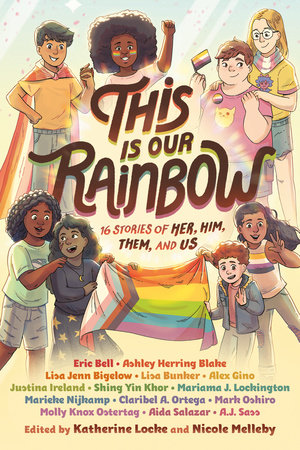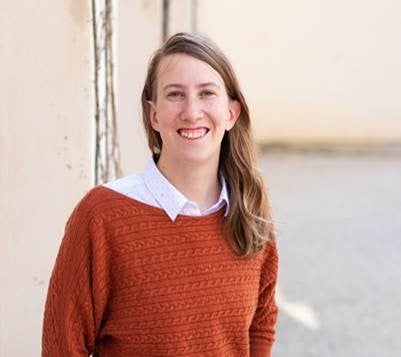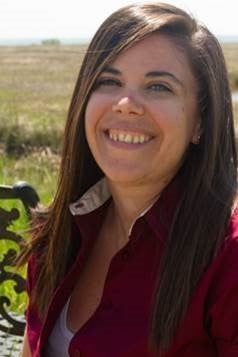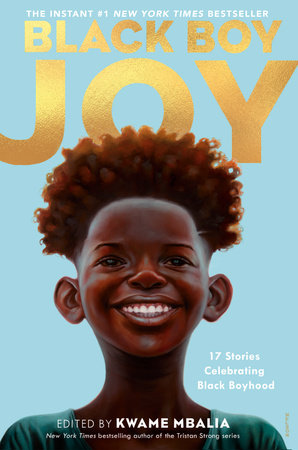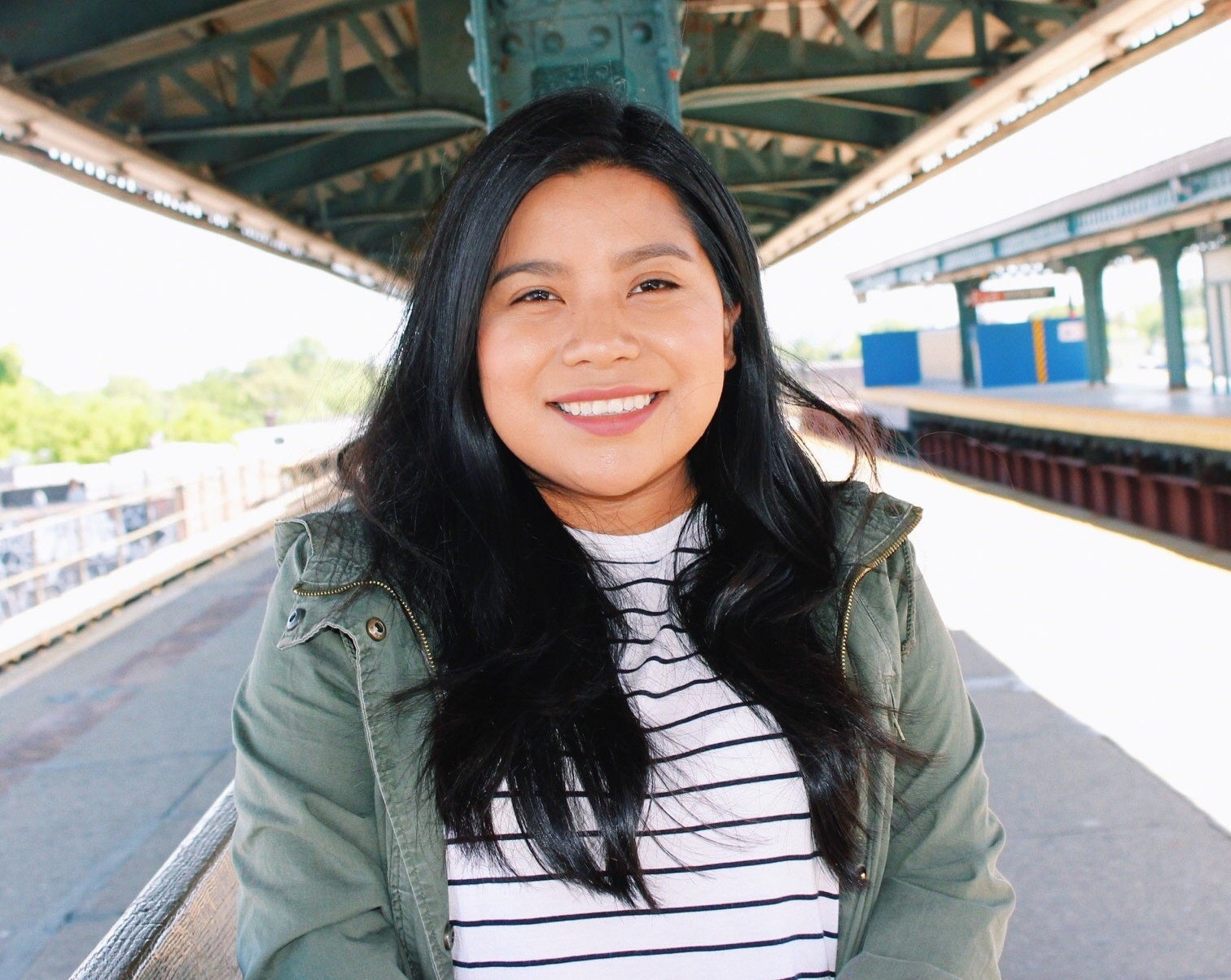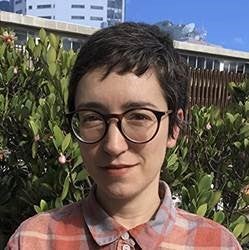Fresh Voices: Katherine Locke and Nicole Melleby
Welcome to Fresh Voices! In this new series, we are excited to share with you authors whose books capture a unique aspect of the human experience. Enjoy this Q&A with Katherine Locke and Nicole Melleby about their anthology, This Is Our Rainbow!
1. What gave you the idea to create this anthology? How did you go about choosing which contributors you wanted to participate?
Nicole and Katherine: Dahlia Adler, another queer author who runs LGBTQreads.com and has put together a bunch of anthologies herself, had tweeted something like, someone should be putting a queer MG anthology together if they’re not already. Nicole said, I would love to, but I am absolutely not equipped to do this, I have no idea how. And that was when Dahlia said, look, Katherine Locke has done it before, and they’re great, so I’m going to pair you two up. We talked and realized that we had similar visions for the project, so we decided to go for it.
Choosing the contributors was really a matter of, okay, how many voices can we include in this anthology? How many different identities could we have stories for? And we started making lists of the authors who always pop into my head when I think about queer kid lit. At the end of the day, it was more about wanting to appeal to as many different types of readers as possible, in addition to reaching as much representation as possible, than it was just reaching out to our friends or anything like that.
2. What was the most difficult part about writing your short story for the anthology? What part was the easiest?
Nicole: My answer for both “most difficult” and “easiest” is actually the same exact answer: Keeping it short! This was my first time writing a short story for a project. On the one hand, it was so nice to be able to really hone in and focus on a really simple emotional thread and run with it. On the other hand, I wanted to make sure I was able to do the character and story justice, just as much as I did having only around 5,000 words as I do when I have 50,000 words to play with. I was also able to take my pitch of “What if the song Stacy’s Mom was about a queer girl?” and use it. It’s a little too simplistic for a full length novel, but was perfect for this, so I was excited to finally have the chance to use it.
Katherine: This was my first time writing something fully secondary world fantasy for publication, I think, and so stuffing enough world building into a limited amount of words was a challenge! But I think the easiest part was the representation. Writing Jupiter, my little pirate protagonist, as nonbinary felt so right that I’ve never questioned or wondered about writing them in any other way. I loved writing a world where their identity isn’t questioned or a problem, where their gender identity is accepted by their family, where their sister is queer and married and normalized. Pirates already buck the system in so many ways, it was fun to think about them bucking the cisheteronormativity that might exist on land.
3. Aside from your short story, is there another short story that you identify with the most, and why?
Nicole: I’m going to cheat and name two stories: “The Makeover” by Shing Yin Khor, because I constantly struggle with how I want to dress and present myself. Being quarantined during the pandemic actually helped me let go of some hang ups I had about appearances and start allowing myself to dress and look how I actually wanted. Having a group of friends to help support you finding your own personal style, whatever that may be, is such a wonderful concept.
The other story is “Menudo Fan Club” by Aida Salazar. I cannot even tell you how many times growing up—and into adult hood—I made up a male celebrity crush on the spot just so that things wouldn’t get awkward and I wouldn’t have to try and explain why I didn’t actually like any of the male celebrities that way.
Katherine: I also really loved Shing Yin Khor’s “The Makeover.” It’s the one that made me cry when I read it because I felt so seen. But I also really love Marieke Nijkamp’s “Splinter and Ash.” As someone who grew up on Tamora Pierce and absolutely adored the Tortall books, I am hungry for stories that feel like Tortall, but with gender and sexuality and disability representation that feels authentic and daring.
4. What do you want young readers today to take away from this anthology?
Nicole and Katherine: We really just want them to know that they’re not alone. And, ultimately, this is an anthology full of queer joy, and we want all of our readers to be able to experience that joy themselves. Even if they are not at that point in their own lives, we want them to see the possibilities. Possibilities are incredibly powerful.
5. What are you currently reading?
Nicole: I am currently reading advanced copies of two really special books: The Ogress and the Orphans by Kelly Barnhill (out March 8, 2022) and In the Key of Us by one of our fabulous contributors, Mariama Lockington (out April 26, 2022).
Katherine: I’m currently jealous of Nicole’s early copies! I am reading Little Thieves by Margaret Owens and The Other Talk by Brendan Kiely, both out now.
Fresh Voices: Kwame Mbalia
Welcome to Fresh Voices! In this new series, we are excited to share with you authors whose books capture a unique aspect of the human experience. Enjoy this Q&A with Kwame Mbalia, editor of the anthology, Black Boy Joy!
What gave you the idea to create this anthology? How did you go about choosing which contributors you wanted to participate?
This idea came about in part due to my wish to work with a lot of the amazing contributors, and also in part due to the constant barrage of negative labels assigned to Black children by the media. This was my attempt to say to those children–and especially those boys like myself when I was younger–that we recognize their happiness, their achievements, and their joy.
What was the most difficult part about writing your story THE GRIOT OF GROVER STREET? What part was the easiest?
The hardest part of my story was trying to make sure each part had its own energy, and didn’t require readers to flip back to parts one and two to remember what was happening. The easiest part was embellishing Gary the Griot’s (Mr. G) wardrobe. It’s my wardrobe.
Aside from your short story, is there another short story that you identify with the most, and why?
I think I connected on some level with each of the sixteen other stories. Getting dressed for school, relying on my grandmothers/elders for support and encouragement, trying to kickflip, etc. Each of them provided some harmony with my memories of growing up
What do you want young readers today to take away from this anthology?
I hope they take away a favorite story they reread over and over. I hope they take away inspiration to find their own joyful safe spaces. I hope they take away an appreciation for short stories, and how they can be about anything, from fantasy to sci-fi to contemporary fiction. I hope they take the book away from the library repeatedly, checking it out over and over because it brings them joy.
What are you currently reading?
I am currently reading The Black Jacobins by C.L.R. James, a book about the Haitian revolution and the events leading up to it.
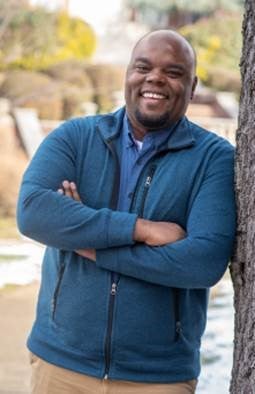
Kwame Mbalia is a husband, father, New York Times bestselling author, and former pharmaceutical metrologist, in that order. His debut middle-grade novel, TRISTAN STRONG PUNCHES A HOLE IN THE SKY, and the sequel, TRISTAN STRONG DESTROYS THE WORLD (October 6, 2020), are published by Rick Riordan Presents/Disney-Hyperion. A Howard University graduate and a Midwesterner now in North Carolina, he survives on dad jokes and Cheez-Its.
Fresh Voices: Areli Morales & Luisa Uribe
Welcome to Fresh Voices! In this new series, we are excited to share with you authors whose books capture a unique aspect of the human experience. Enjoy this Q&A with the creators behind Areli Is a Dreamer, author Areli Morales and illustrator Luisa Uribe!

What inspired you to write/illustrate ARELI IS A DREAMER?
Areli: Areli Is a Dreamer was inspired by my own immigration story and my experience being a child of two worlds. Through this personal book, I wanted to share all the complexities that come along when one leaves their home country to pursue a better life in a new place. Through my story, I want immigrant children and adults to feel seen, be heard, and know that their stories matter too.
Luisa: I was inspired by Areli’s words. Her story resonated with me because I knew that it was a story shared by many others. And I knew that the book would find a home with many families that have gone through the same thing. I also loved the opportunity to show how hard and brave it is to leave loved ones behind in search of something better.
What was the most difficult part about writing/illustrating ARELI IS A DREAMER? What part was the easiest?
Areli: I became fully aware of my undocumented status at a very young age and was struck with fear when I realized that everything could be taken away at any moment if I spoke about my first home. For many years I kept my status a secret because I thought my silence would keep my family safe and united. It was a challenge to find the courage to break out of that silence and write my story down on paper. It feels liberating to share my true story and meet new people that share similar experiences. Sometimes, I did not have the right words to communicate my experience to a younger audience through the perspective of a child. Thankfully I had the support of my agent, Brenda Bowen, who is also a talented children’s book author. She helped me find the right words to address the complex emotions and circumstances. The easiest part was writing about my relationship with my family. This book is proof that their support, love, and sacrifices made a difference.
Luisa: Getting the moments of emotion were hard for me. I felt that I had to do justice to the sad but hopeful points in the story. When Areli leaves her grandma and arrives in NY, her being so small making such a hard journey, and the embrace of her parents afterwards, those images were hard. The easiest drawings were the happy and hopeful moments. Drawing the pictures of Areli thriving was exciting and motivating after drawing her struggles earlier in the book.
For Areli: How do you feel about seeing your story in a picture book? Is there any part of your personal journey that you wished could be included, but didn't work for a picture book audience or length?
It feels absolutely magical and surreal to see my story documented in a picture book gorgeously illustrated by Luisa Uribe. The pairing of my words and Luisa’s illustrations beautifully captures the hardships, lessons, and triumphs of my immigration story. I also feel privileged to share my story with the world because so many undocumented immigrants still don’t have that privilege.
In the book, I focused on my relationship with my abuela, my brother and parents. However, there are so many wonderful relatives and friends that cared for me and nurtured my growth. I wish I could have included these people and the special moments I shared with them but couldn’t due to the length of the picture book. The famous phrase “it takes a village to raise a child” rings true in my childhood both in Mexico and New York. One day, I hope to write about my lovely aunt Rocio that brought me lunch every day in kindergarten. My friend Rose, the owner of my first home in NYC that treated my family like her own family, and my late grandfather Jorge that took my brother and me on rides in his old red pickup truck around our small town in Puebla.
For Luisa: What character or element of the story do you identify with the most and why? Do you approach visual depictions of a living person and current events differently from fictional stories and characters?
My sister left Colombia years ago and now lives in the US, and many relatives and good friends live far away–some halfway around the world. They are all looking for a better life for themselves and their families, and I miss them but I’m happy for them. Coming from a country where opportunities to grow and live well are scarce I understand the need to look for something better and to make sacrifices so that your family can have a better future.
As for the challenges of depicting a living person’s story, it is process that requires a lot of research. It’s obviously important to get the characters, the setting, and all details of the story as accurate as possible so that it feels authentic. It was also a challenge to maintain the accuracy of the details, but also be able to add poetry and magic to the images, because it’s something that I like to do. Some of the choices are already made for you, in a way, which is an interesting challenge. And it was helpful to have Areli who lived the story, to let me know if anything didn’t feel exactly right.
What do you want kids to take away from this story?
Areli: I want this book to be a mirror for immigrant children so they can see themselves reflected in my story and connect with others going through similar experiences. I want this to be a window to those that don’t share this experience but feel encouraged to uplift immigrant voices.
Luisa: Areli said it perfectly, I want immigrant kids and kids that come from immigrant families to have a story that is about them and for them, with characters that look like them, and for other kids to understand what this experience is like so they can be allies in the future.
What books are you currently reading or inspired by?
Areli: Currently reading: Miles Morales: Spider-Man by Jason Reynolds (with a student I’m tutoring) and In the Country We Love: My Family Divided by Diane Guerrero, Michelle Burford.
I will always reread and be inspired by The House on Mango Street by Sandra Cisneros.
Luisa: I just finished reading Cry, Heart, But Never Break by Glenn Ringtved and illustrated by Charlotte Pardi, and am getting ready to start on Can We All Be Feminists? Edited by June Eric-Udorie. I read a lot of science-fiction last year and Ursula K. Le Guin is a great inspiration.
What would be your dream project to work on?
Areli: I would love to work on a project focused on the experiences of children and youth who were born or raised in the US and returned to Mexico with their parents. I would love to meet them and hopefully collaborate on a children’s book that talks about their experiences living between two countries, cultures, and languages.
Luisa: I’d love to work on a project for children about climate change, which would underline the urgent changes we need to make while being hopeful for the future.
Fresh Voices: Tara Wilson Redd
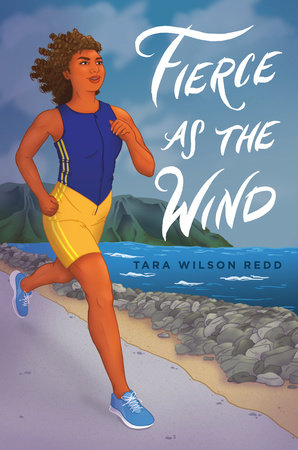
What inspired Miho’s character and her story?
My whole life, I’ve been really active—I loved Zumba, spin classes, jogging, you name it. But I wasn’t an “athlete.” I was just “staying active.” When I decided to run my first marathon, I discovered that the difference between jogging and running isn’t a matter of fitness, it’s a matter of identity. Learning to see myself as a runner and an athlete was my own coming-of-age story in my 30s. And Miho, of course, is the daughter of that realization and (if we’re being honest) a fortuitously timed rewatch of Legally Blonde.
What was the most difficult part about writing Fierce as the Wind? What part was the easiest?
Training for an Ironman is incredibly boring for spectators. I find the long workouts centering—I solve all my writing problems in the pool!—but six hours straight on a bike does not dramatic tension make. Trying to keep training interesting to read about was really hard!
The easiest part, unfortunately, was writing Miho’s experience of racism. It’s still pretty easy for me to pull up the exact feeling of being told I didn’t earn my spot in college because I’m a person of color, or the feeling that everyone around me is staring because I’m the only non-white person in a room. This book was a nice way to turn some of my lingering bitterness into something positive. Make good art, as the saying goes.
What character do you identify with the most and why?
I gave small pieces of my own insecurities to all the kids in this book, including the “villains.” I see a lot of my teen self in all these characters. But, as an adult, I definitely identify most with Tua. I’m a student supervisor at a university library, and the challenge of working with new adults has been one of the most satisfying parts of my library career. Friendship and family are at the heart of many books, but mentorship is something that is particularly important to me.
If you could put any character from another book into this story, who would it be and why?
I would put Bicycle from The Adventures of a Girl Called Bicycle into this story. Bicycle is a quiet but very determined girl who rides her bike across the country in search of friendship. I think Miho’s next chapter should involve branching out with some new bike friends who are different from her, but just as passionate as she is!
What do you want teens today to take away from this story?
I hope that teens leave this book more conscious of the labels that they apply to themselves, and the way those labels can both empower them and limit what they think is possible. Miho is an artist and an athlete from the very start—she just doesn’t know she’s allowed to call herself one. Identity can be a powerful community-building tool, but it can also be a prison.
What are you currently reading?
I am currently reading We Ride Upon Sticks. Naturally, I have a soft spot for books about teen girls in sports, and this one is beyond delicious. Every sentence is just perfectly rich.
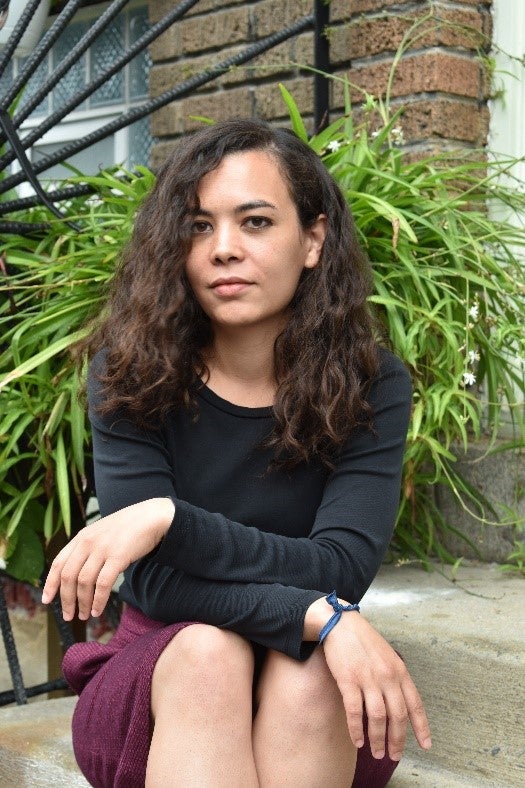
Tara Wilson Redd
TARA WILSON REDD, a graduate of Reed College, grew up all over the United States, including in St. Louis, Seattle, and Central Oregon. A lifelong runner, she finally caught the triathlon bug and completed her first Ironman in 2019. She lives in Washington, DC, where she works in libraries (when she's not on her bike). The Museum of Us was her first novel. Visit her online at tarawilsonredd.com and on Instagram and Twitter (@tarawilsonredd).
Fresh Voices: Jodie Patterson and Charnelle Pinkney Barlow
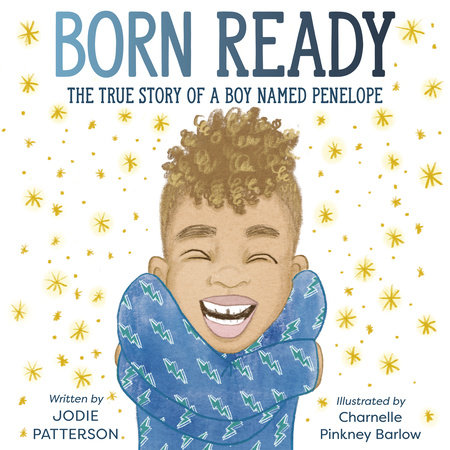
What inspired you to write/illustrate BORN READY?
Jodie Patterson: My first book, THE BOLD WORLD, was a memoir and it was dense, layered, and sometimes sad. This time around I wanted to write something for children that was triumphant, uplifting, and victorious. I wanted to write a book that talked about the complexities of gender and identity – without honing in on the crisis. I wanted to speak about love and optimism. BORN READY is from the voice of my kids and from Penel’s perspective and it shows how promising the exploration of gender can be.
Charnelle Pinkney Barlow: What drew me to this story was the ability that Jodie had to hold space for Penelope. Instead of chalking up Penelope’s frustration and anger as a kid acting out, she took the time to sit with him and get to the root of what he was feeling. Then not only did Jodie listen to Penelope, she took action on what she was told. Holding space for kids to be who they are is an important thing to show in children’s books.
What was the most difficult part about writing/illustrating BORN READY? What part was the easiest?
Patterson: Condensing years into just a few stand-out moments was challenging. There are so many moments that make up the gradual shifts in family dynamics – and choosing the few that resonate the loudest almost felt impossible. But in the end, with the help of my kids, we were able to pull out key memories that highlight our journey.
Trusting that an illustrator will capture your family precisely can be nerve wracking. At first I was focused on each character looking exactly as we do in real life. But as with writing, illustrating is a layered process and as that process moved forward and the details began to come through, I realized that the key is to capture our essence. I think Charnelle Pinkney Barlow captured the essence of each of us beautifully.
Barlow: The most difficult part about illustrating BORN READY was visually showing Penelope’s frustration without making him look like a mean kid. He’s not a mean kid, he just needed the space to express himself and be seen. The easiest part was showing Penelope’s joy as it really shines through in the writing and illustrating all of the fun ninja sequences.
For Jodi: How does Penel feel about seeing his story in a picture book? Was there any part of his personal journey that he wished could be included, but didn't work for a picture book audience or length?
Patterson: Penel and his siblings are all smiles about the book! Each time they pick up BORN READY, which is often, they beam with pride and they marvel at how we all look and sound just like ourselves. I made sure to include all the kids in the process of writing BORN READY. I had them help with language, but also with choosing which memories to share and what feelings to convey. Now when they hold the book, it’s a trip down memory lane for them. BORN READY feels truthful and authentic to them.
And I think I’m the one who has more ideas and wishes that I want to share with our audience. And maybe those ideas will come out in forthcoming books. But, for Penel, I think he has a sense of accomplishment – with this book for sure, and from life in general. I believe Penel feels both seen and heard and this book will be a prized accomplishment for him for years to come.
For Charnelle: What character or element of the story do you identify with the most and why?
Barlow: The character I identify with the most is Penelope’s friend Big D. While he only plays a small part in the story, I identify with the way he accepts Penelope as he is with no second thoughts.
If you could put any character from another book into this story, who would it be and why?
Patterson: I would invite James Baldwin into our lives. Baldwin sitting at our kitchen table, sharing his wisdom on gender and how it relates to race and sexuality and humanity would make for an epic moment of invocation.
Barlow: I honestly can’t think of a character that I’d insert into this story; mainly because this story is about real happenings, so it is complete in and of itself. On another note, it would be fun to see Penelope hop into another book and go on an adventure with another character.
What do you want kids today to take away from this story?
Patterson: Kids have a unique power. They see the world with fresh eyes. I want kids, especially trans identified and gender nonconforming kids to know they were born ready, ready for anything that comes their way. Kids: You can move through any problem or person, any construct or system that stands in your way. You can even fly over obstacles because you are bigger than obstacles. You’re a ninja – and what you’ve come here to do is important.
Barlow: I want kids to see that they have the freedom to be who they were born to be and belong in this world as they are. I love that this story acknowledges different questions of what it means to be trans and gender nonconforming that both children and adults have at times (such as Grandpa G exclaims that there aren’t any gender pronouns in his native language or when Penelope’s principal asks him if he is feeling embarrassed about the other kids asking him about his school uniform). This book shows what it means to ask questions while listening and giving support. BORN READY says it best: “‘Not everything needs to make sense. This is about love.’”
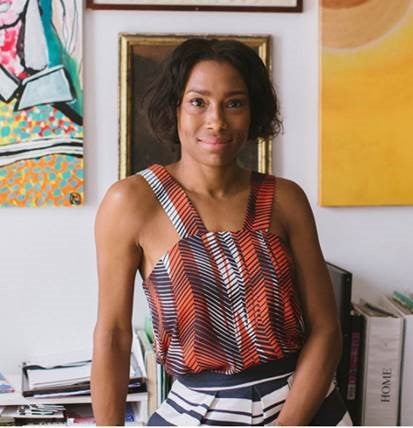
Jodie Patterson
Jodie Patterson is a social activist, entrepreneur, and writer. She has been lauded for her activist work by Hillary Clinton, The Advocate, Family Circle, Essence, Cosmopolitan, and Yahoo!, among others. She sits on the board of a number of gender/family/human rights organizations, including the Human Rights Campaign, and is a sought-after public speaker addressing a wide range of audiences about identity, gender, beauty, and entrepreneurship. Patterson was appointed by the United Nations as a Champion of Change and, perhaps most impressively, she is a former circus acrobat who performed in the Big Apple Circus. She lives in Brooklyn, New York, where she co-parents her five children with love, education, and family solidarity.
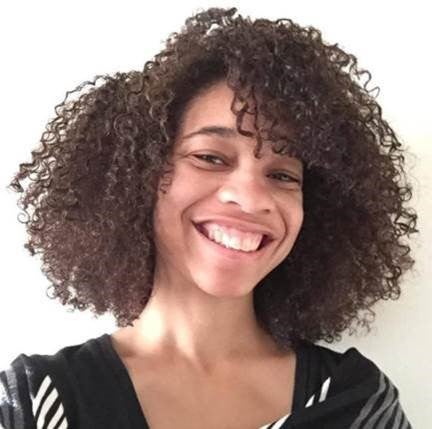
Charnelle Pinkney Barlow
CHARNELLE PINKNEY BARLOW received her BFA in llustration from the University of the Arts, Philadelphia, and her MFA in the Illustration as Visual Essay from the School of Visual Arts, New York. Charnelle’s children's book illustrations include Everything in Its Place, The Real Santa, and Remember to Dream, Ebere. Charnelle lives in Indianapolis with her husband. When she's not drawing, she is baking, sewing, or reading with a cup of tea by her side. Find her online at callmechartreuse.com and follow her on Instagram at @callmechartreuse.

